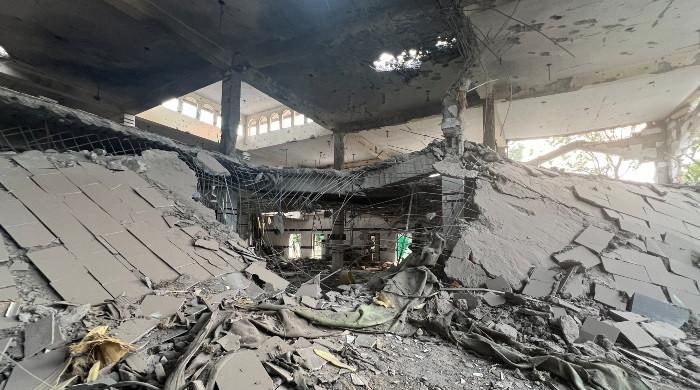The international legal order is actually on a decline, and the West, which has damaged that the system has long been divided. Nevertheless, it is also true that part of the international law exceeds the existing world of international law and precedes it; This part is called the International Humanitarian Law (IHL), better known by its previous name ‘War Act’.
IHL takes place a very unique area of law dealing with JUS in Bello (Law in War), which sounds oxymoronic. IHL is deeply rooted in the usual international law and is strengthened by greater religions in the world, which finds its principles of civil protection, protection of women and children, necessity, distinction and proportionality as universal and as common values. Worldwide, professional military is trained in this law of law through the good offices of the International Red Cross (ICRC), which has an international mandate to convey it.
Professional military puts the principles of IHL in their training and operations. As of today, IHL’s usual international law has been largely codified through the Treaty Act, resulting in The Hague Conventions and Geneva Conventions and their Protocols.
Most specifically, the violations of IHL’s war crimes and crimes against humanity are called. The list of violations was expanded through the Rome Statute of the International Criminal Court (ICC Statute) in 1998 and included offenses of aggression and genocide. The supplementary part of IHL is jus by Bellum (the War Act), which is largely politically and administered within the parameters of the UN Charter and by Uno.
India used the Pahagam incident as a Casus Belli (cause of war) to initiate an international armed conflict (IAC) against Pakistan. The categorization of IAC has attracted the use of IHL on the actions of India; Therefore, its illegal, illegal and unilateral acts can be declared international wrong and war crimes.
India is not a party to ICC and cannot be prosecuted for these crimes; However, the purpose of the adumbration is to bring record the war crimes committed by India and to state that criminal responsibility for India’s leadership is not dismissed or reduced by a lack of a prosecution mechanism.
The biggest war crimes committed by India are: First, India used water as a means of warning. It chose one -sided, illegally and without reason or rhyme, that the Indus Waters Treaty (IWT) by putting it in ‘monkey’, a sentence that is foreign to the treaty and to the Vienna Treaty Act (VCLT).
In addition to disregarding the World Bank supported IWT, India violated Article 54 of the extra protocol in to the Geneva Conventions (AP-I), which banned the ‘hunger of civilians as a warfare method’.
This ban was not only declaring, but was criminalized as a war crime (Article 8 (2) (b) (XXV) in the ICC statute). It may be noted that criminal responsibility is personal and the officers/persons involved in committing the war crime to starve the civilian population will be personally responsible for the war crimes committed.
Secondly, India violated Article 2 of the UN Charter, which obliged it to respect the principle of sovereign equality and to refrain from using the power or the threat of power against Pakistan’s territorial integrity. Article 2 (2). 3, in the UN Charter, specifically, India demanded to settle the dispute through peaceful means. On May 7, 2025, it attacked nine spectacles and killed 26 innocent civilians, including women and children who violated the UN -Charter and used power in such a ‘character, gravity and scale …’ that it made up ‘aggression’ with regard to the United Nations General Assembly Solution 3314 (XXIX).
India’s ‘Bombardment’ was a violation of articles 48, 49, 50 and 51 of the extra protocol for the Geneva Conventions, 1977 (AP-I). The violation of attacking civilians has been criminalized by the ICC statute in his Article 8 as a war crime. Most of the ‘locations’/places that are attacked are mosques/worship sites. This is clearly violating Article 53 of the AP-I, which prohibits attacking places of worship. The act of attacking religious buildings has been erected as a war crime under the ICC statute. Therefore, can and should be held responsible for committing this creepy war crime.
Thirdly, the War Act clearly prohibits armed attacks on works and installations that contain dangerous forces such as dams/water reservoirs in Article 56 of the AP-I. India’s attack on the Neelum-Jhelum waterpower project was a clear violation of this important provision specifically prohibiting attacking critical infrastructure that could jeopardize civilian populations.
Fourth, as many as 29 drones were reduced on a day in different urban areas in Pakistan – and 77 in two days. The unmanned drones striking against civilian populations, including at a cricket stadium in Rawalpindi, exposed the illegality in the use of drones of India, as these were not directed at military targets and apparently did not use the principle of distinction.
No precautionary stage as expected in articles 36 and 57 in the AP-I was taken. Article 36 of the AP-I demanded that the Party to AP-I (India sign and ratified the IHL instruments) when using new weapons (as a drone in this case) should have made sure no protection was violated under the IHL laws.
Finally, India has offered all kinds of miserable reasons for its failure to fulfill the universally accepted principles of IHL during its military actions on May 7. On the killing of women and children, India tried to hide behind the imaginary ‘security injury’ without showing what was ‘direct or real injury’ as it intended to beat.
By means of his right to self-defense as described in accordance with Article 51 of the UN-Charter, Pakistan responded to the military targets in India in accordance with IHL’s principles. Pakistan reserves the right to ask for compensation for the damage caused by India in his recent aggression against Pakistan.
However, it may be noted that the impunity that India violates international law is not unprecedented, as it is a copycat of Israel and the United States in many respects; However, it should be remembered that the illegality breeds the illegality and that the rulebook of impunity can certainly be copied by everyone when push comes to cloud.
The author is a serving police officer who works like you -technical procurement for the Punjab police, Lahore.
Disclaimer: The views expressed in this piece are the author’s own and does not necessarily reflect geo.tv’s editorial policy
Originally published in the news



